Serpentine Pavilion designed to be "part of surrounding landscape" says Junya Ishigami
In this exclusive Dezeen video, Japanese architect Junya Ishigami explains how his design for this year's Serpentine Pavilion was built to resemble a "stone hill".
Ishigami's pavilion was unveiled yesterday at the Serpentine Gallery in London, following the resignation of the gallery's CEO Yana Peel.
The pavilion is a 350 square-metre "cave-like refuge" covered by a slate-clad canopy that appears to grow out of the ground of the surrounding park.
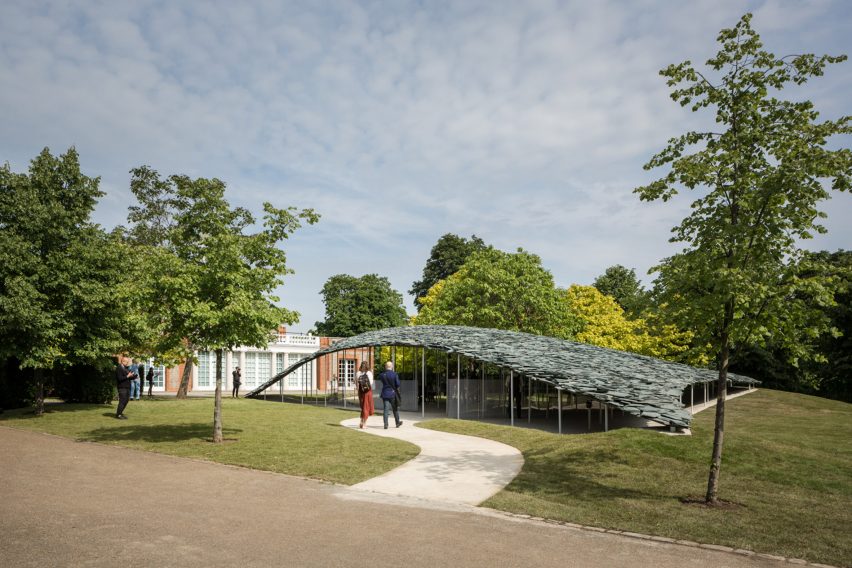
The design is influenced by Ishigami's "free-space" philosophy which seeks to create structures that mimic natural forms, a common theme in the work of his architecture studio Junya Ishigami + Associates.
"I knew that the Serpentine site is in the middle of a park so I wanted to make the architecture part of the landscape rather than making it an independent building," Ishigami told Dezeen.
"The finished pavilion looks like a stone hill."
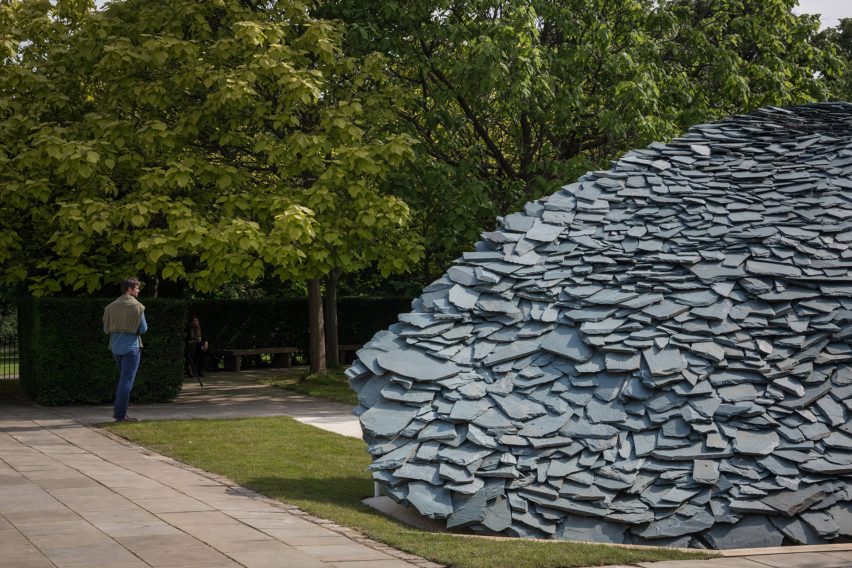
Held up by 106 columns, the triangular canopy is constructed from a steel mesh grid and covered with 61 tonnes of Cumbrian slate tiles. The corners of the canopy extend down to meet the concrete surface below, with the aim of blending the structure into the landscape.
The interior space is furnished with simple metal tables and stools, designed by Ishigami to resemble lily pads, and will host a programme of events throughout the summer.

Ishigami was influenced by ancient building techniques for the design of the canopy.
"I started to look at ancient buildings using ancient architectural techniques. I believe that those ancient buildings have some similarities all over the world," he stated. "For example, you can see stone roofs in Japan, China and Europe, so I started to focus on those ancient techniques that have that universality."
"I decided to use stone to make this building and when I thought about the context of the Serpentine site I decided on slate," Ishigami explained. "Also because it is a readily available British material."
The architect chose to use irregular shaped slate tiles arranged on the canopy's steel grid in a manner that blocks out the rain and imitates a natural terrain.
"When I thought about creating architecture as a landscape, rather than using standardised units of material I used random shapes arranged in a random manner to create something less artificial and more organic," Ishigami explained.
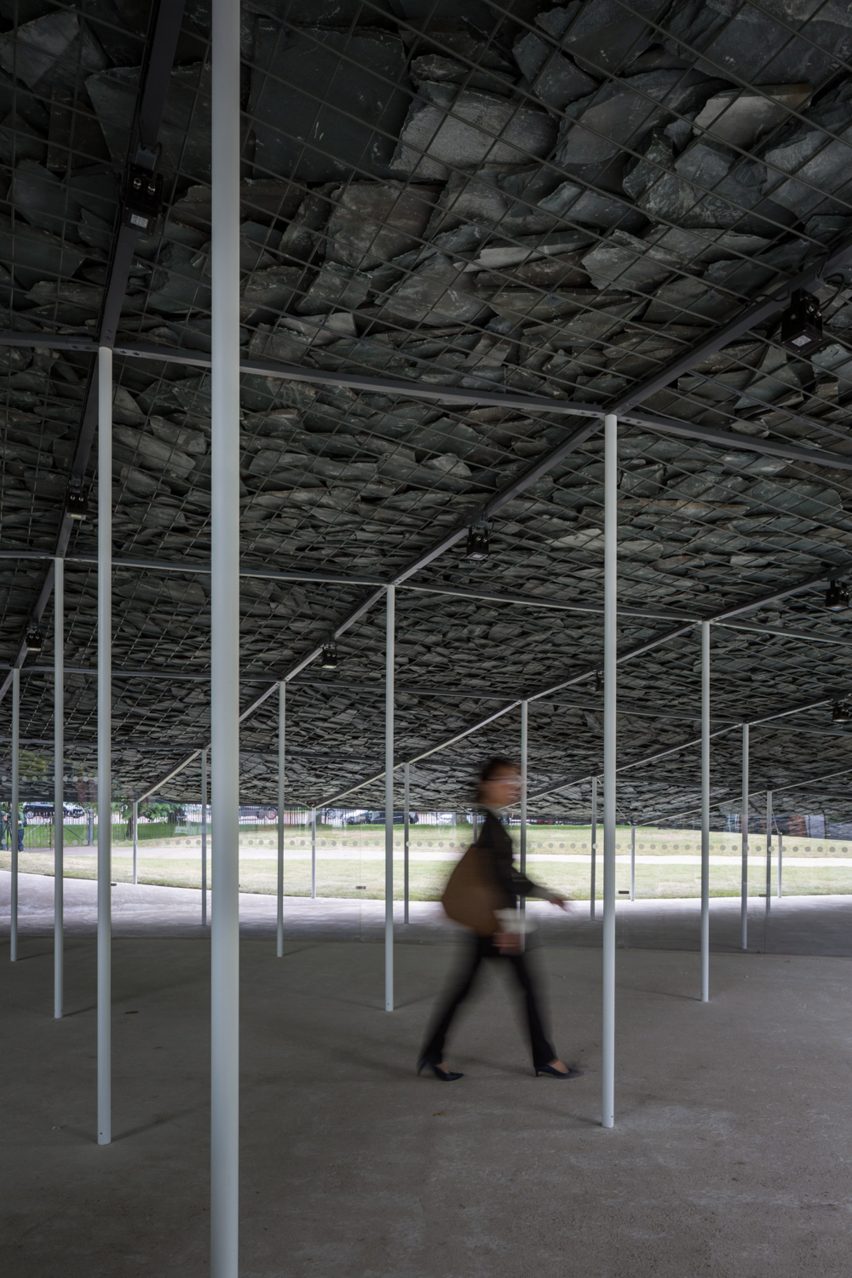
While the pavilion is designed with the surrounding landscape in mind, Ishigami hopes the pavilion will spark the imagination of visitors to interpret its shape differently.
"I wanted to expand this imagery to form other connections in people's imagination," he said.
"At a certain moment, it might be perceived as a black bird against the sky. The roof of the pavilion becomes a pair of wings with slate feathers."
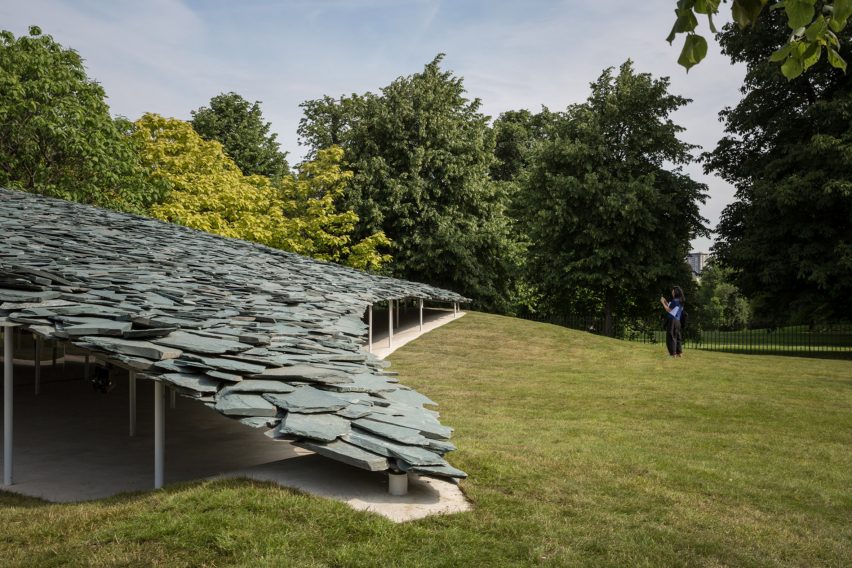
The Serpentine Pavilion is an annual architectural pavilion installed at the Serpentine Gallery, which each year commissions an architect with the only criteria being that they have not completed a UK-based project before.
Previous iterations of the pavilion have been designed by architects including Zaha Hadid, Peter Zumthor, Bjarke Ingels, and Herzog de Meuron. Last year's pavilion was designed by Mexican architect Frida Escobedo, who created a courtyard framed by latticed walls made from concrete tiles.
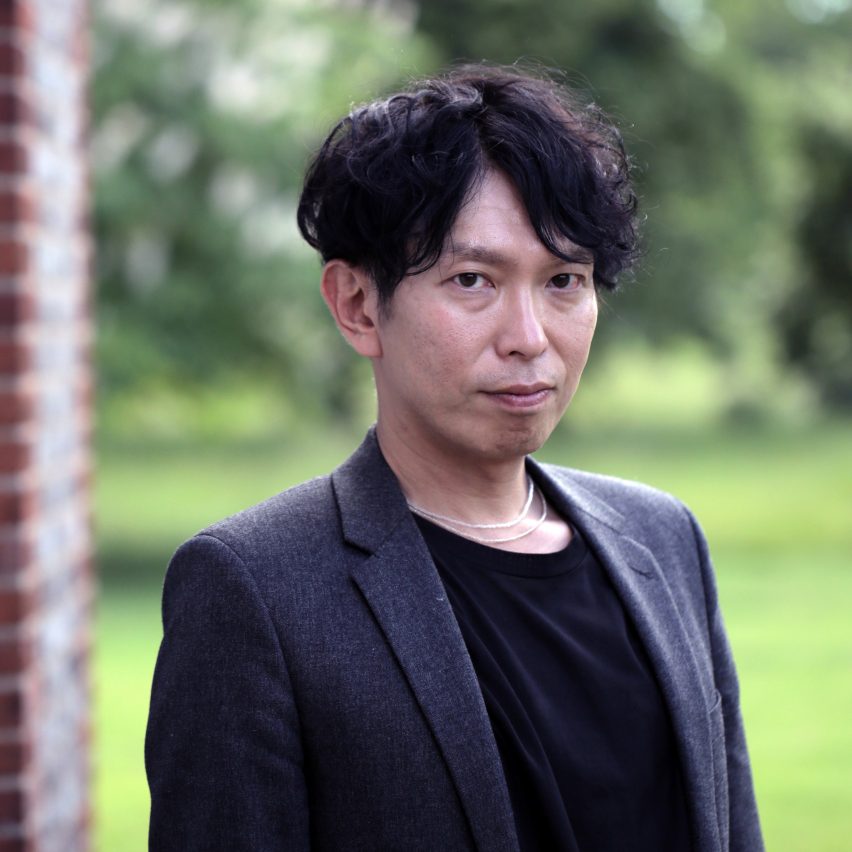
Ishigami's previous work include a Japanese ferry terminal based on a "beautiful mountain range" and a cloud-like building with a boating lake inside for Copenhagen's harbour.
This video was filmed by Dezeen at Kensington Gardens in London. Photography is by Ste Murray, unless otherwise specified.
Updated February 2020
Following a legal complaint, the Guardian removed its article of 14 June 2019 and apologised to Mrs Peel. We are happy to clarify that Yana Peel is not, and was not, personally involved in the operation or decisions of the regulated Novalpina Capital investment fund, which is managed by her husband Stephen Peel, and others. Mrs Peel was not involved in any decision-making relating to the fund’s acquisition of NSO. Mrs Peel only has a small, indirect and passive interest in the fund. She does not own, whether directly or indirectly, any Novalpina Capital entity.